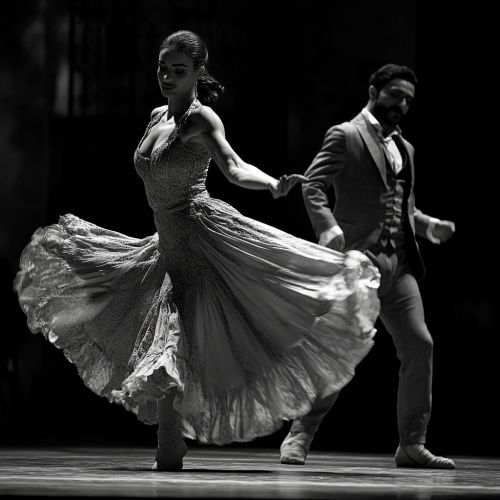Malagueñas
Introduction
Malagueñas are a traditional form of flamenco music and dance originating from the region of Málaga, in southern Spain. This style is characterized by its expressive and often melancholic melodies, which are typically performed in a free rhythm. Malagueñas have evolved over time, incorporating various musical influences and techniques, and remain a significant part of flamenco culture.
Historical Background
The origins of malagueñas can be traced back to the 18th century. Initially, they were closely related to the fandango, a lively dance form that was popular in Andalusia. Over time, malagueñas developed their own distinct identity, characterized by slower tempos and more intricate melodic lines. The evolution of malagueñas was influenced by various cultural and musical traditions, including Moorish, Gypsy, and Spanish folk music.
Musical Structure
Malagueñas are typically performed in a free rhythm, known as rubato, which allows for expressive interpretation by the performer. The melodic structure of malagueñas is often based on the Phrygian mode, a scale that is commonly used in flamenco music. This mode gives malagueñas their distinctive, somewhat exotic sound.
The lyrics of malagueñas often deal with themes of love, loss, and longing. They are usually sung in a highly emotive style, with the singer employing various vocal techniques such as melisma (the singing of a single syllable of text while moving between several different notes in succession) and portamento (a smooth, gliding transition from one note to another).
Dance and Performance
The dance form of malagueñas is characterized by its graceful and fluid movements. Dancers often use a variety of techniques, including intricate footwork, expressive hand gestures, and dramatic body movements. The dance is typically performed solo, although it can also be done in pairs or groups.
The traditional costume for malagueñas dancers includes a long, flowing dress for women, often adorned with ruffles and lace, and a fitted jacket and trousers for men. The dancers may also use props such as fans or castanets to enhance their performance.
Notable Artists and Performances
Over the years, many renowned flamenco artists have contributed to the development and popularization of malagueñas. Some of the most notable figures include:
- Antonio Chacón: A legendary flamenco singer known for his powerful and emotive renditions of malagueñas.
- Paco de Lucía: A virtuoso flamenco guitarist who incorporated malagueñas into his repertoire, bringing the style to a wider audience.
- Carmen Amaya: A celebrated flamenco dancer whose performances of malagueñas were renowned for their intensity and passion.
Modern Interpretations
In contemporary times, malagueñas continue to be an important part of the flamenco tradition. Modern performers often experiment with the form, incorporating elements from other musical genres such as jazz, classical, and world music. This has led to the creation of new and innovative interpretations of malagueñas, while still preserving the essence of the traditional style.
Cultural Significance
Malagueñas hold a special place in the cultural heritage of Andalusia. They are not only a form of artistic expression but also a means of preserving and transmitting the region's history and traditions. Malagueñas are performed at various cultural events and festivals, such as the annual Feria de Málaga, where they are celebrated as a symbol of local identity and pride.
See Also
Categories


